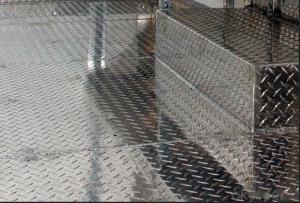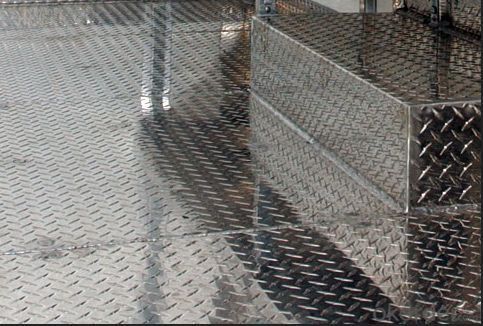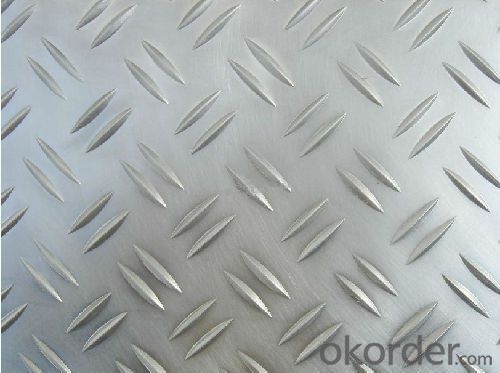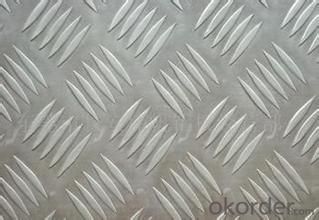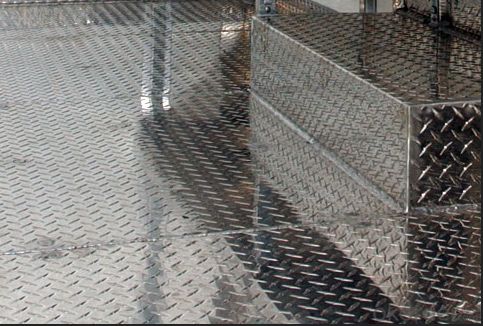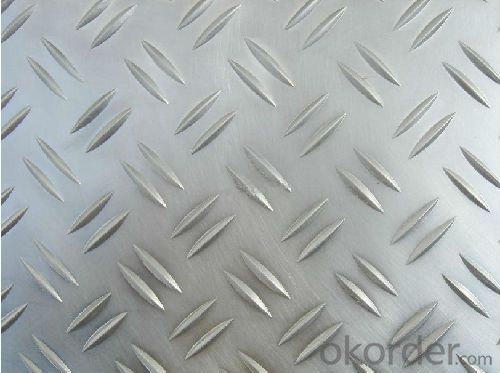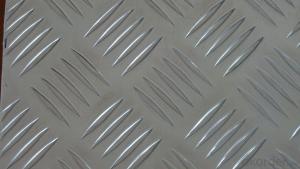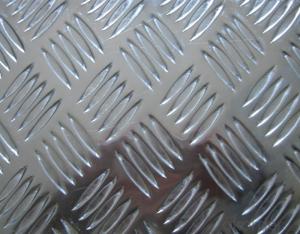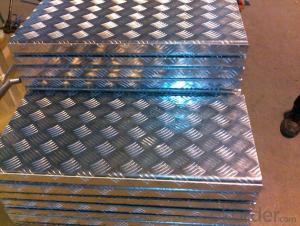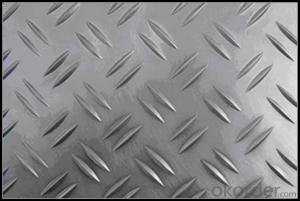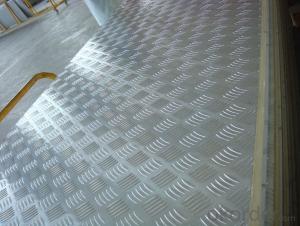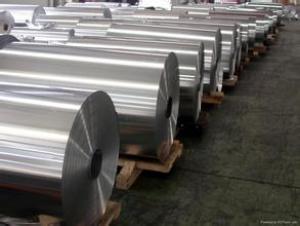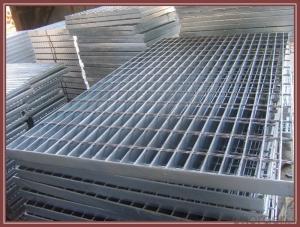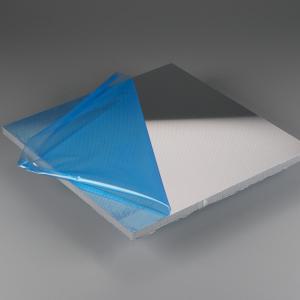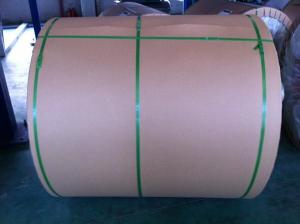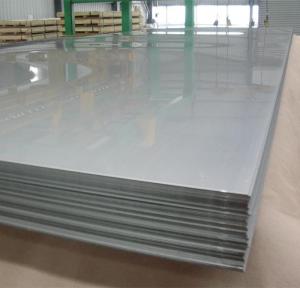Alumco Manufactures Anti-Slip Aluminum Checkered Plate for Truck
- Loading Port:
- Shanghai
- Payment Terms:
- TT OR LC
- Min Order Qty:
- 5 m.t.
- Supply Capability:
- 9000 m.t./month
OKorder Service Pledge
Quality Product, Order Online Tracking, Timely Delivery
OKorder Financial Service
Credit Rating, Credit Services, Credit Purchasing
You Might Also Like
Specification
Grade:
1000 Series,3000 Series,4000 Series,5000 Series,6000 Series,7000 Series,2000 Series
Surface Treatment:
Coated,Embossed,Anodized,Polished,Mill Finish,Color Coated,Oxidized,Enameled Wire,Brushed,Printed,Composited,Holographic Impression,Sand Blasted,Powder Coating
Shape:
Angle,Square,T-Profile,Round,Flat,Rectangular,Oval,Hexagonal
Temper:
T3-T8,O-H112,T351-T651,T351-T851,Soft,Half Hard,Hard
Application:
Liner & Wad,Decorations,Door & Window,Heat Sink,Transportation Tools,Glass Wall,Food,Kitchen Use,Pharmaceutical,Seal & Closure,Insulation Material,Label & Tag
1 Specifications of Anti-slip Aluminum Checkered Plate For Truck Body
Main Specification | |
Alloy | AA1xxx (AA1050, AA1060, AA1070, AA1100 etc. |
AA3xxx (AA3003, AA3004, AA3005, AA3105 etc. | |
AA5xxx (AA5052, AA5754, AA5083 etc. | |
Temper | H14, H18, H24, H26, H32 |
Thickness | 0.2mm-20mm |
Width | 10mm-1500mm |
Embossed Patterns | Diamond, Stucco, Bars etc. |
Standard | GB/T 3880-2006 |
Special specification is available on customer’s requirement | |
2 Usage/Applications of Anti-slip Aluminum Checkered Plate For Truck Body
3 Packaging & Delivery
| Packaging Details: | Anti-slip Aluminum Checkered Plate For Truck body 1000~2500 kg can be packed in wooden pallet. Each paper interleaved 17~19 ton can be loaded in 1 x 20 container if standard size 1220 x 2440 mm 20~22 ton can be loaded in 1 x 20 container if standard size 1000 x 2000mm |
| Delivery Detail: | in 30 days after we received your advance payment. |

- Q: The which temperature the aluminum evaporates in vacuum?
- Aluminum boils at 2519 °C (4566 °F) at normal pressure. In a vacuum, it might boil (a little) at 808 °C, but actually this is better known as subliming.
- Q: Are aluminum sheets suitable for food preparation surfaces?
- Yes, aluminum sheets are suitable for food preparation surfaces. Aluminum is a lightweight and durable material that is commonly used in the food industry. It is non-toxic, non-reactive, and does not release any harmful chemicals when it comes into contact with food. Aluminum sheets are also easy to clean and maintain, making them a popular choice for food preparation surfaces in both commercial kitchens and home kitchens. Additionally, aluminum has excellent heat conductivity, allowing for even cooking and baking. However, it is important to note that aluminum can react with acidic or salty foods, causing a metallic taste. To prevent this, it is recommended to use a layer of parchment paper or silicone baking mat as a barrier between the aluminum sheet and the food.
- Q: Does anyone know anything about the value of aluminum can(beer, soda, etc.) pull tabs? I have heard a rumor that the tabs are worth more than the cans and that a gallon jug of tabs can be sold at recycling centers for several hundred dollars.Anyone know if this is really true?
- Sept 2014 Update. Aluminum recycle rates continue to be low in comparison to other metals, about 85 cents per pound. 2,000 tabs are worth about $1. A gallon (approximately 4,000 tabs) is worth about $2. The effort needed to collect that many tabs isn't well rewarded. There is no special value for the pull tab - it is simply aluminum. The entire can has more than 100 times the aluminum as the tab itself. While it takes less room, recycling just the tab and throwing away the can doesn't make any sense and isn't worth the time or effort. While they are accepted at charities like the Ronald McDonald House, you are likely to spend more on gas driving them there and would pay approximately twenty times their value in postage if you mail them. Some craft projects use tabs, if you find someone or a group who does this they may give you more than the metal value. Purses made out of pull tabs are somewhat popular. My suggestion - if you recycle - great! Recycle the whole can and realize that you are not going to get yourself or a charity rich because aluminum isn't worth a lot. You are helping the environment though. Take the entire can and any other metal you want to recycle to a local recycler and donate the proceeds however you wish.
- Q: What are aluminum sheets used for?
- Aluminum sheets are widely used for various applications such as building facades, roofing, automotive parts, aircraft components, packaging materials, electrical wiring, and heat exchangers due to their lightweight, corrosion-resistant, and malleable properties.
- Q: What are the different fabrication methods used for aluminum sheets?
- Aluminum sheets undergo various fabrication methods, each presenting its own advantages and applications. Rolling, extrusion, casting, and stamping are among the most commonly employed techniques. Rolling, the most prevalent method, entails passing the aluminum through a series of rollers to reduce thickness and form a flat sheet. This approach allows for precise control over sheet thickness and shape, rendering it suitable for an array of applications, from packaging to building materials. Another well-received method is extrusion, where heated aluminum is pushed through a die to create a specific shape or profile. This technique is commonly employed to manufacture intricate shapes like tubes, rods, and channels. Extruded aluminum sheets exhibit high strength and durability, making them appropriate for structural applications in construction and automotive industries. Casting involves pouring molten aluminum into a mold, allowing it to solidify. This method is frequently used for producing intricate shapes that are challenging to achieve through other means. Cast aluminum sheets can boast unique textures and designs, making them popular for decorative purposes. Stamping utilizes a press to shape the aluminum sheet by exerting pressure and forming it into the desired shape. This technique is commonly utilized for creating precise, small parts such as brackets, connectors, and electrical components. Stamped aluminum sheets offer exceptional dimensional accuracy and can be produced in large quantities at a relatively low cost. Additionally, other fabrication techniques such as welding, bending, and laser cutting can be employed to further process aluminum sheets and craft custom shapes and designs. In conclusion, the choice of fabrication method for aluminum sheets relies on the desired application, required properties, and complexity of the desired shape. Each method possesses unique advantages and capabilities, enabling a broad range of possibilities in aluminum sheet fabrication.
- Q: on an hot day, which will stay cooler longer...aluminum, or copper? why?thanks!
- Copper is a better conductor of both heat and electricity so it will get hotter faster at least until it oxidizes and turns green
- Q: Can aluminum sheets be used for elevator interiors?
- Indeed, elevator interiors can certainly be constructed using aluminum sheets. Aluminum has gained significant popularity as a material of choice for elevator interiors due to its multitude of advantageous qualities. Its lightweight nature, durability, and resistance to corrosion render it highly suitable for long-term utilization in elevator applications. With ease, aluminum sheets can be skillfully fabricated and shaped to perfectly fit the dimensions and design specifications of elevator interiors. Furthermore, aluminum can be enhanced with various types of coatings or finishes, such as anodizing or powder coating, to not only augment its aesthetic appeal but also provide additional protection. Overall, aluminum sheets represent a practical and widely utilized option for elevator interiors within the industry.
- Q: When water continually sprays on the aluminum sheet, how to avoid corrosion of aluminum sheet and keep its water resistance?
- Don’t worry about it, after aluminum contacts water or air, a layer of oxide film will generate on its surface to separate aluminum from the water or air and protect it, so it won’t be erosive.
- Q: Can aluminum sheets be used for decorative ceilings?
- Indeed, decorative ceilings can utilize aluminum sheets. The versatility of aluminum allows for the creation of a multitude of designs and patterns, resulting in visually pleasing ceilings. Its lightweight nature, durability, and resistance to corrosion make it a favored choice for decorative purposes. Furthermore, aluminum sheets can be powder-coated or painted in various colors, enabling them to align with the desired aesthetic of any given space. Regardless of whether the purpose is residential or commercial, aluminum sheets provide a contemporary and fashionable option for crafting decorative ceilings.
- Q: Can aluminum sheets be used in construction?
- Yes, aluminum sheets can be used in construction. They are commonly used for roofing, siding, and structural applications due to their lightweight, corrosion-resistant, and durable properties.
Send your message to us
Alumco Manufactures Anti-Slip Aluminum Checkered Plate for Truck
- Loading Port:
- Shanghai
- Payment Terms:
- TT OR LC
- Min Order Qty:
- 5 m.t.
- Supply Capability:
- 9000 m.t./month
OKorder Service Pledge
Quality Product, Order Online Tracking, Timely Delivery
OKorder Financial Service
Credit Rating, Credit Services, Credit Purchasing
Similar products
Hot products
Hot Searches
Related keywords
